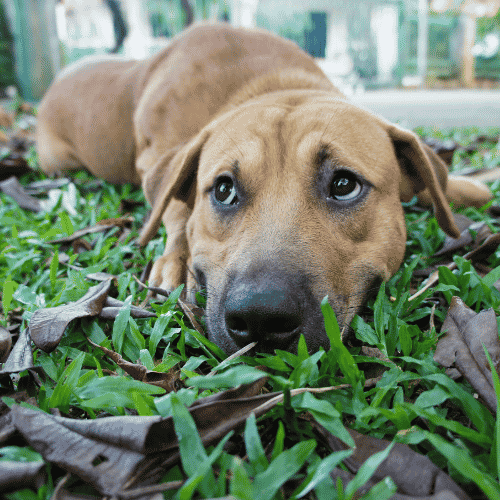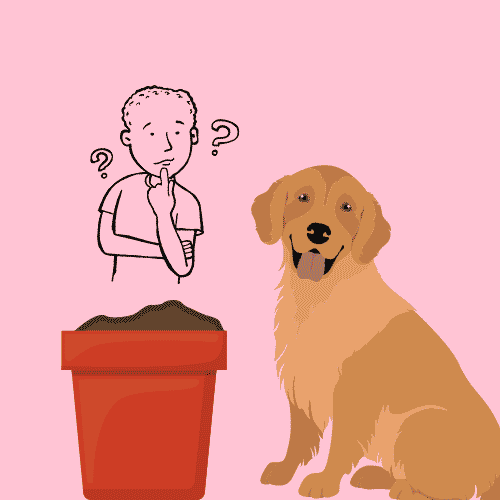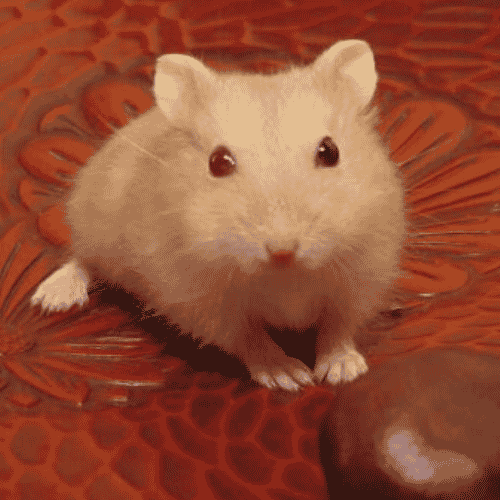Dogs are curious animals who love to explore their surroundings, bark, and eat practically anything. This activity can be hazardous at times, particularly if your dog ingests items that are damaging to its health. Potting soil is one of these many potentially harmful compounds. Do you know whether your dog has ever tried to eat potting dirt/soil? If that is the case, you can’t ignore this. If you observe that your dog is eating soil from pots, this might indicate a more serious underlying condition.

There are different reasons why your dog is eating potting dirt/soil. It’s possible that your dog just likes the way it tastes. Another reason for your dog’s habit of eating dirt is that he may be looking for nutrients, such as minerals, vitamins, or even beneficial probiotic bacteria, lacking in his diet.
Dogs shouldn’t consume potting dirt, even if it’s unlikely to be harmful. There is a possibility that the dirt contains substances that have the potential to be dangerous. You may try distracting him with various activities, such as playing with the toys.
Why Is My Dog Eating Potting Soil/Dirt?
There are various reasons why your dog may eat potting soil, but some of the reasons are more prevalent than others.
- Curiosity
Dogs are generally curious animals. Additionally, they have extraordinarily powerful noses and can taste things we cannot. This makes them use their mouths and noses to check exciting things, like potting soil. They may eat soil to understand things better while exploring.
- Your Dog Is Hungry
Dogs consume soil when they’re hungry and seek anything to eat around the house.
- Lacking Nutrient
If a dog believes that he does not receive the necessary nutrients from his dog food, then the dog will actively seek out additional ways to obtain those nutrients.
Your dog may be trying to compensate for the deficiencies in its food, which may include a lack of vitamins, minerals, and beneficial microorganisms, by eating the soil around its yard.
- Upset Stomach
Dogs may consume soil to calm an upset stomach or intestines. If your dog is experiencing stomach problems, they are more prone to eat grass. Since potting soil resembles dirt, they may consume it for stomach issues. Unfortunately, rather than making things better, it’s more likely to make them worse.
- Pica Syndrome in Dogs
Dogs can suffer from various eating problems, including pica syndrome, one of such disease. Pica syndrome is characterized by the desire to consume inedible items, such as dirt. This is not a typical pattern of behavior, and your pet needs to see a veterinarian as soon as possible. Stress, worry, a lack of mental or physical stimulation, a lack of socialization, and other factors can all play a role in developing pica syndrome in dogs.
Why Does My Cat Get Along With Dogs and Other Animals But Not Another Cat?
- Anemia
The term “low red blood cell count” relates to this particular medical issue.
Adult and senior canines are more likely to suffer from severe anemia if they are diagnosed with certain types of malignant tumors, which can cause internal bleeding. Anemia in dogs of any age can be caused by various conditions, including extremely uncommon immune-mediated illnesses and bleeding disorders. If a dog has any kind of anemia and the symptoms are severe enough, it may start eating soil.
Is Eating Dirt Bad for Dogs?
Yes! Eating dirt can cause a number of issues for dogs. Eating clumps of soil, mud or other materials can cause choking. Tooth fractures can also be caused by chewing and swallowing hard things, such as pebbles and animal bones that may be found mixed in with the soil.

In addition to the more readily apparent risks, here are a few additions that you might not be aware of.
- Gastrointestinal Obstruction
It is possible for foreign bodies, such as dirt, pebbles, twigs, and other items, to become stuck in a dog’s esophagus, stomach, or intestines. This condition is referred to as a blockage of the gastrointestinal tract. Surgical treatment is frequently required in order to treat a blockage.
The following are examples of possible symptoms of an obstruction:
- Gagging
- Coughing
- Regurgitation
- Abdominal pain
- Decreased appetite
- Nausea and vomiting
- Lethargy
- Toxins
If your dog eats soil or grass, they risk ingesting various poisons, such as pesticides, fertilizers, and other chemicals that may be extremely hazardous to their health.
- Parasites
When dogs eat soil, they increase their risk of swallowing soil-dwelling parasites such as roundworms, hookworm, and whipworms. Other soil-dwelling parasites include capillaria and giardia. They might also eat fleas crawling around on the soil, which could introduce them to a parasite known as tapeworms.
Dog Panting & Restless? Understanding Hypervigilance In Dogs
What to Do if My Dog Ate Potting Dirt?
When you enter the house, you see your dog sitting in the middle of a botched plant setup. Your plant is on the floor, and soil is all around it. You believe that your dog has consumed some soil. Or you caught them with soil in their mouth. What do you do?
- Remove the dirt
The first step is to stop your dog from consuming additional potting dirt/soil. Put all potting soil, including any potted plants and the bag of the soil itself, out of your dog’s reach, including the potting soil itself.
- Balanced Diet
Ensuring your dog’s nutritional demands are satisfied by providing it with a high-quality, balanced meal. Check to see that the portions of the food you give your dog are proper. Changing your dog’s food should be done slowly, over a week or two.
- Check the Label
It is essential to inspect the label now that the immediate threat of your dog ingesting additional soil has been eliminated. Check whether the potting soil has any additives like fertilizer, insecticide, or pesticide.
- Watch for Symptoms
You should watch your dog’s symptoms regardless of whether your potting soil includes hazardous substances. Symptoms might appear soon or days after intake, depending on the cause. Keep an eye on them for the first 12 to 24 hours after they have ingested it.
- Call the Vet
Call your veterinarian or as soon as possible if you become aware of any symptoms or have any reason to suspect that your dog has consumed something poisonous.
- Preventive Medicine
in addition to scheduling routine appointments with your veterinarian, you must follow your canine companion’s prescribed vaccination and deworming schedules.
Can a Dog Get Sick From Eating Potting Dirt?
Dogs can become ill from eating dirt, particularly potting soil. Because it includes fertilizers, fertilizers for lawns, pesticides, and other poisons, soil can become poisonous to your dog if it is consumed in sufficient quantities. If your dog consumes enough soil, it will become toxic.
What Causes Pica in Dogs?
Physical or psychological issues can cause pica, but the outcome is the same: your dog will eat anything in sight, digestible or not.

Doctor of Veterinary Medicine (D.V.M.) at Nation Taiwan University,Master of Science (M.S.) in Biomedical Engineering at National Taiwan University of Science and Technology




